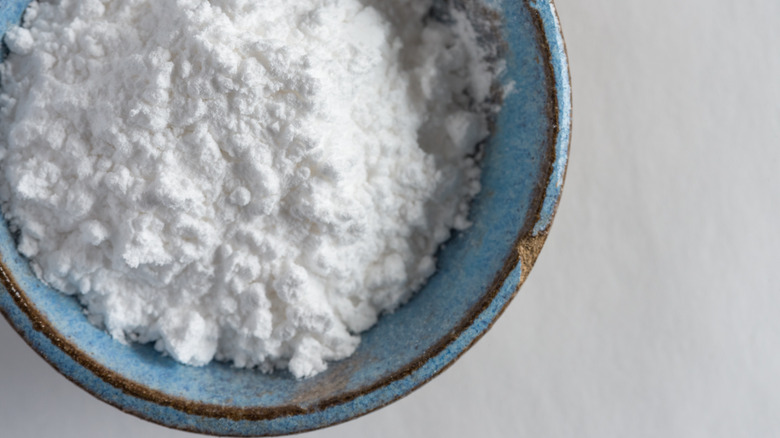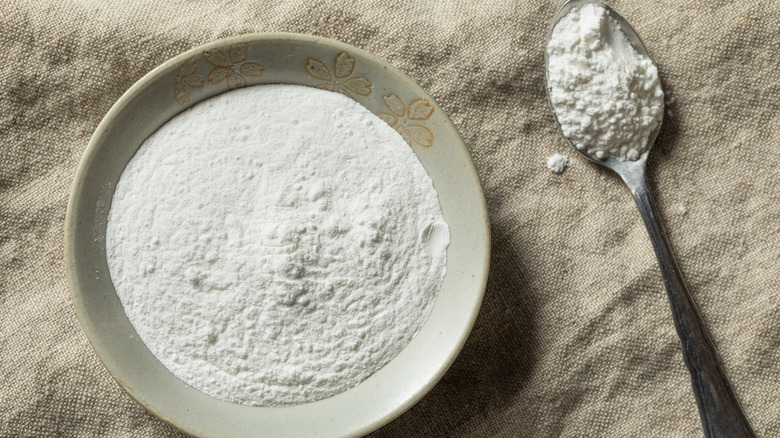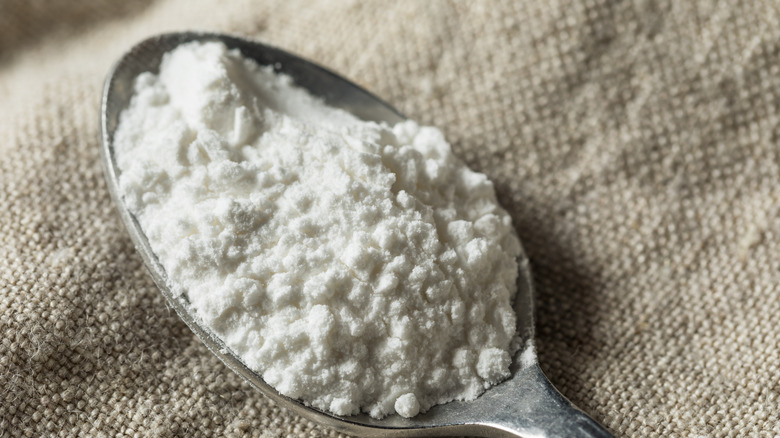The Best Way To Store Cream Of Tartar For Maximum Freshness
Avid bakers will probably know that — despite sounding like it should be related to tartar sauce in some shape or form — cream of tartar is a powdery substance nothing at all like the creamy and savory condiment. Produced as a byproduct in the winemaking process and scientifically known as potassium bitartrate or potassium acid tartrate, cream of tartar is a powdery white substance that can last for a few years in your pantry and even a few months after its best-by date — provided that you're storing it in an airtight and dry container.
Resembling baking soda much more than the sauce it shares a name with, cream of tartar is best known for stabilizing egg whites and is a complete lifesaver when making incredibly delicate items like macaron shells, angel food cake, or any other recipe involving meringue. It's also good at stabilizing whipped cream and making extremely chewy cookies — and much like baking soda, it also makes a great cleaning agent. You may find yourself reaching for it fairly frequently in your baking and general household endeavors, and it's important to know how to store and handle it properly if you want it to maintain potency throughout its printed shelf life.
Cream of tartar needs to be stored in a cool, dry, and dark place
It's tempting to assume that pantry items like cream of tartar and baking soda have an eternal shelf life due to their naturally long-lasting and low-maintenance nature. The unfortunate part is that this incredibly useful baking component does start to go bad once you've opened the package, albeit at an incredibly slow pace. On average, cream of tartar retains potency four years after its manufacturing date, but this shelf life can be cut short by the usual culprits behind ruined pantry items: moisture and heat.
Cream of tartar comes in various kinds of containers, from plastic to canned to paper and cardboard. Ideally, you should be transferring any cream of tartar in a paper and/or cardboard box to an airtight container to minimize the amount of moisture it's taking in from the ambient air in your kitchen or pantry. You should also avoid storing it in cupboards over the stove or other heat-generating appliances as well as places that see any kind of direct sunlight. It should absolutely be kept outside the refrigerator, as cold condensation can cause unwanted moisture — not to mention that it soaks up odors and can take on the smell of anything remotely smelly in your fridge. Furthermore, you should make sure to dry out all your measuring spoons and utensils completely before using them on cream of tartar so as to avoid introducing water into the container.
How to tell if cream of tartar has gone bad
Generally speaking, cream of tartar doesn't spoil over time so much as it loses its potency to be effective. Over time, you may see it start to clump up — while this can be a sign of excess moisture, small clumps are completely normal and require nothing more than a little sifting with a fork. However, if you're seeing large clumps and/or yellowish discoloration, it's a sure sign that the cream of tartar has fully expired and needs to be replaced.
Given that cream of tartar can still be used for up to six months after its expiry date, you might find yourself unsure if a recently expired batch will be effective or not. If there seems to be nothing visually off about it, a good way to test its potency is to mix a bit of baking soda and a half teaspoon of cream of tartar into a small cup of warm water. If the mixture reacts by bubbling up, the cream of tartar is still good to go. If the mixture stays more or less flat, you'll know that all the chemical properties it has in baking are gone, and you'll need a new carton.
Another thing to keep in mind is that it's far from impossible for cream of tartar to spoil or mold and become actively unsafe to consume. If you live in a particularly humid region and haven't stored your cream of tartar in a tightly secured container, or haven't been careful about using damp utensils on it, you may find spots of mold growing inside long before its expiry date.


